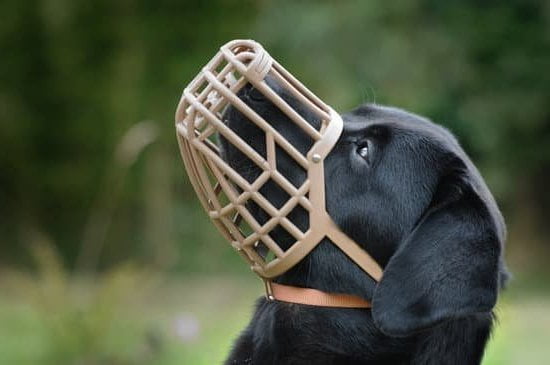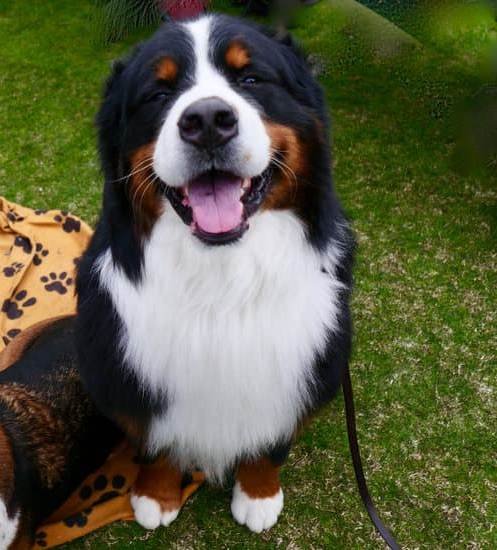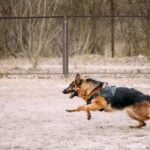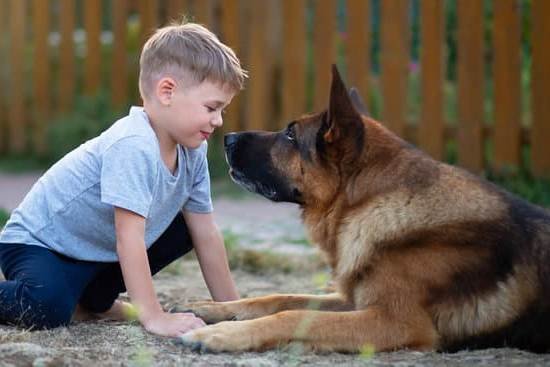Training a dog with leash aggression can be a challenging but rewarding experience for both you and your furry friend. Leash aggression in dogs is a common issue that many pet owners face, but with the right techniques and understanding, it can be managed effectively. In this article, we will delve into the root causes of leash aggression in dogs and provide valuable insights on how to address and overcome this behavior.
Leash aggression in dogs can stem from various underlying factors, such as fear, anxiety, territoriality, or past negative experiences. Understanding these root causes is essential in developing an effective training plan to address the behavior. By identifying the triggers and motivations behind your dog’s leash aggression, you can better tailor your training approach to suit their specific needs.
Recognizing the signs and symptoms of leash aggression is crucial for pet owners to address problematic behavior in their dogs. Whether it’s lunging, barking, growling, or showing signs of discomfort while on the leash, being able to identify these behaviors will help you take proactive steps towards finding a solution. With proper knowledge and guidance, you can set the foundation for successful training by implementing positive reinforcement techniques and utilizing behavior modification tools.
Signs and Symptoms of Leash Aggression
When it comes to leash aggression in dogs, it’s crucial to be able to identify the signs and symptoms of this problematic behavior. Leash aggression can manifest in various ways, including growling, barking, lunging, or pulling on the leash when encountering certain triggers such as other dogs or unfamiliar people. It is vital for dog owners to be able to recognize these behaviors so they can address them effectively.
One common sign of leash aggression is when a dog reacts negatively towards other dogs while on a walk. This can include displaying aggressive body language, vocalizing aggressively, and attempting to pull away from the handler. Other signs may include excessive barking or growling when encountering strangers or reacting negatively towards specific stimuli in the environment.
It’s important for dog owners to pay attention to their pet’s body language and behavior while on walks. Understanding what triggers your dog’s leash aggression is essential in addressing and correcting this behavior. By identifying these signs and symptoms early on, you can take proactive steps in addressing the issue using positive reinforcement techniques and desensitization training methods.
| Leash Aggression Signs | Identifying Problematic Behavior |
|---|---|
| Growling | Reacting negatively towards other dogs |
| Lunging | Excessive barking or growling |
| Pulling on the leash | Reacting negatively towards specific stimuli |
The Importance of Proper Leash Training
Proper leash training is essential for any dog, but it becomes even more crucial when dealing with leash aggression. Without a strong foundation in leash manners, it can be challenging to address and correct aggressive behavior in dogs. In this section, we will discuss the significance of proper leash training and how it sets the groundwork for successful training when dealing with leash aggression.
Establishing Control and Communication
When a dog exhibits leash aggression, it often stems from a lack of control and communication between the dog and its owner. Proper leash training teaches the dog to walk calmly on the leash, follow commands, and understand boundaries. By establishing control and clear communication through proper leash training, you can lay the groundwork for addressing and managing leash aggression in your dog effectively.
Building Trust and Confidence
Training a dog with leash aggression requires building trust and confidence not only in the dog but also in the owner. Proper leash training helps to build trust as the dog learns to rely on their owner for guidance and security while on walks. This trust is crucial when working to overcome leash aggression issues as it allows for a stronger bond between the dog and owner, making it easier to address problematic behaviors.
Preventing Escalation of Aggressive Behavior
By implementing proper leash training from an early age or when introducing a new dog into your home, you can prevent or minimize the likelihood of developing leash aggression. When a dog understands how to walk calmly on a leash and follow commands, they are less likely to become reactive or aggressive towards other dogs or people while on walks.
Investing time in proper lease training can ultimately prevent potential escalation of aggressive behavior in dogs, making it an essential foundation for successful training when dealing with leash aggression.
Positive Reinforcement Techniques
Leash aggression in dogs can be a challenging behavior to address, but positive reinforcement techniques offer an effective approach to training. By using reward-based training methods, dog owners can help their pets overcome leash aggression and enjoy stress-free walks.
Understanding Positive Reinforcement
Positive reinforcement involves rewarding desired behaviors with treats, praise, or toys. This method encourages the dog to repeat the behavior that leads to a positive outcome, making it an ideal approach for addressing leash aggression. Instead of punishing the dog for displaying aggressive behavior on the leash, focus on rewarding calm and non-aggressive responses.
Implementing Reward-Based Training
When using positive reinforcement to address leash aggression, it’s important to start in a calm and controlled environment. Begin by associating the sight of other dogs or triggers that cause aggression with something positive, such as treats or toys. As your dog begins to display calmer behavior in response to these triggers, consistently reward them with their favorite treats or verbal praise.
The Role of Consistency
Consistency is key when implementing reward-based training methods for leash aggression. Always carry treats during walks and be prepared to use them to reinforce positive behavior whenever your dog encounters potential triggers. It’s also important for all family members and anyone who walks the dog to use consistent training methods, helping reinforce positive behaviors across different situations.
By understanding and utilizing positive reinforcement techniques, dog owners can make significant progress in addressing leash aggression in their pets. With patience and consistency, this reward-based approach can help dogs develop more positive associations with being on a leash and encountering potential triggers. If struggling with implementing these techniques successfully, seeking advice from a professional dog trainer may provide valuable guidance on how to train a dog with leash aggression effectively.
Counter-Conditioning and Desensitization
Training a dog with leash aggression can be a challenging task, but it is not impossible. Counter-conditioning and desensitization are two key techniques that can help your dog overcome their aggressive behavior while on the leash. These methods involve changing your dog’s emotional response to the triggers that cause them to act aggressively, ultimately replacing fear or aggression with positive associations.
Counter-conditioning involves creating positive associations with the trigger that causes your dog to become aggressive. For example, if your dog shows aggression towards other dogs while on a leash, you can start by exposing them to other dogs from a distance where they do not react negatively. Then, you can reward them with treats or praise as long as they remain calm. Over time, your dog will learn to associate the presence of other dogs with positive experiences.
Desensitization involves gradually exposing your dog to the trigger in a controlled and safe environment. This process allows your dog to become less sensitive or reactive to the trigger over time. By slowly increasing their exposure to the trigger while using positive reinforcement, you can help your dog build confidence and reduce their aggressive behavior.
It’s important to remember that counter-conditioning and desensitization require patience and consistency. Rushing the process or exposing your dog to intense triggers too quickly can be counterproductive and may worsen their aggression. With proper training and guidance, you can help your dog overcome leash aggression and improve their behavior while on walks.
| Leash Aggression Training Techniques | Description |
|---|---|
| Counter-Conditioning | Create positive associations with triggers that cause aggression |
| Desensitization | Gradually expose the dog to triggers in a controlled environment |
Utilizing Behavior Modification Tools
Leash aggression in dogs can be a challenging behavior to address, but utilizing behavior modification tools such as head collars and harnesses can greatly aid in training your dog to overcome this issue. These tools are designed to help provide better control over your dog during walks and can be effective in managing leash aggression.
One of the most popular behavior modification tools for leash aggression is the head collar, which fits around your dog’s muzzle and neck and provides gentle control and steering. It helps prevent your dog from pulling on the leash, allowing you to redirect their attention when they exhibit aggressive behavior. It’s important to properly introduce the head collar to your dog and gradually accustom them to wearing it before using it during walks.
Another useful tool for addressing leash aggression is a front-clip harness, which redirects your dog’s attention back towards you when they pull on the leash. This type of harness discourages pulling by causing your dog to turn around when they try to move forward, ultimately helping to curb their aggressive behavior. Like with any behavior modification tool, it’s crucial to properly fit the harness and acclimate your dog to wearing it before using it during walks.
In addition to these tools, incorporating positive reinforcement techniques while using behavior modification tools is vital for effectively training a dog with leash aggression. By consistently rewarding good behavior with treats or praise, you can create a positive association with walking on a leash and help your dog learn alternative, non-aggressive behaviors. As always, patience and consistency are key when utilizing these behavior modification tools in conjunction with positive reinforcement methods for addressing leash aggression in dogs.
Consistency and Patience
Training a dog with leash aggression takes time, consistency, and patience. It is important to understand that this behavior does not change overnight and will require continuous effort. Here are some key tips to keep in mind when working with a dog that exhibits leash aggression:
- Consistency: Consistency is crucial when training a dog with leash aggression. This means using the same commands, techniques, and routines every time you take your dog for a walk. By being consistent, your dog will begin to understand what is expected of them and what behavior is acceptable.
- Patience: Patience is also essential when dealing with leash aggression. It can be frustrating and challenging, but it’s important to remain calm and composed during training sessions. Dogs pick up on their owner’s emotions, so staying patient will help create a more positive training environment.
- Positive Reinforcement: Using positive reinforcement techniques such as treats, praise, and rewards can be effective in encouraging good behavior on walks. When your dog displays calm and non-aggressive behavior while on the leash, be sure to reward them to reinforce this positive behavior.
Overall, training a dog with leash aggression requires dedication and commitment from both the owner and the dog. By consistently applying positive reinforcement techniques, remaining patient throughout the process, and seeking professional help if needed, it is possible to help a dog overcome their leash aggression issues.
Seeking Professional Help
In conclusion, dealing with leash aggression in dogs can be a challenging and frustrating experience for pet owners. Understanding the root causes of leash aggression and recognizing the signs and symptoms of this problematic behavior are crucial first steps in addressing the issue.
Proper leash training is essential for setting the foundation for successful training, but it’s also important to utilize positive reinforcement techniques, counter-conditioning, and desensitization methods to help your dog overcome their aggression triggers. Being consistent and patient throughout the training process is key, as is knowing when to seek professional help from a professional dog trainer specialized in dealing with leash aggression issues.
It’s important to remember that there is no one-size-fits-all solution when it comes to leash aggression in dogs. Each dog is unique, and what works for one may not work for another. This makes seeking professional help an option worth considering if you find yourself struggling to make progress with your dog’s leash aggression.
A professional dog trainer can provide valuable insight, guidance, and personalized training plans specific to your dog’s needs. Their expertise can make a significant difference in effectively addressing and managing your dog’s leash aggression.
Frequently Asked Questions
Can Leash Aggression Be Cured?
Leash aggression can be managed and improved through behavior modification techniques, training, and consistency. While it may not always be “cured,” with the right approach, progress can definitely be made.
How Do I Stop My Dog From Being Aggressive on the Leash?
To stop your dog from being aggressive on the leash, it’s important to first understand the root cause of the aggression. Seek professional help from a trainer or behaviorist who can assess your dog’s behavior and provide guidance on how to address it effectively.
How Do You Train an Aggressive Dog to Walk on a Leash?
Training an aggressive dog to walk on a leash requires patience, positive reinforcement, and consistency. Start by desensitizing the dog to triggers that incite aggression, use treats to reinforce calm behavior, and gradually work on improving their response while on a leash.
This process may take time but is essential for the safety and well-being of both the dog and its owner.

Welcome to the blog! I am a professional dog trainer and have been working with dogs for many years. In this blog, I will be discussing various topics related to dog training, including tips, tricks, and advice. I hope you find this information helpful and informative. Thanks for reading!





